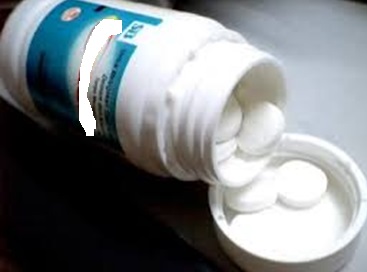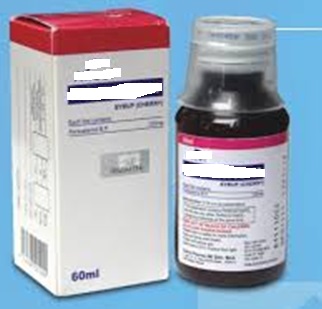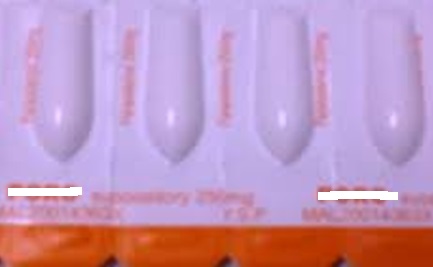Introduction
Paracetamol was the most common drug used by the public for fever, headache and pain killer. It is also known as acetaminophen. This drug was easily access over the counter in Malaysia. Therefore, it was the most common toxic exposure to the public. However, this drug was very safe to use with the correct dose of consumption. The recommended dosing of paracetamol is 650 to 1000 milligrams in adults and 10 to 15 milligrams/kg in children, every 4 to 6 hours. The paracetamol was prepared in many different forms such as tablets, capsules, suppository and liquid (figure 1,2,3,4) with a different concentration (500mg/tablets or 650mg/tablet and 120mg/5ml or 250mg/5ml for syrup form). It will be a poison when the intake of this drug over the toxic dose. A toxic dose of paracetamol is shown in table 1.
| Ingestion | Toxic Dose |
| Single dose ingestion | >200mg/kg |
| Over a 24-hour period | >200mg/kg |
| 24-hour period for at least 2 consecutive day | >150mg/kg |
Table 1: toxic dose of paracetamol ingestion
|
Figure 1: round shape tablet paracetamol |
Figure 2 : oval shape tablet paracetamol |
|
Figure 3: syrup paracetamol |
Figure 4: suppository paracetamol |
Signs And Symptoms
Signs and symptoms of paracetamol poisoning are depends on the time of ingestion. In the early stage, patients are usually asymptomatic. The correlation between sign and symptoms of paracetamol poisoning with the time of ingestion are illustrate in table 2.
| Stage | 1 | 2 | 3 | 4 |
| Timing from ingestion | First 24 hour | Days 2-3 | Days 3-4 | After day 4 |
| Sign and symptoms | Loss of appetite | Improvement in appetite, less nausea and vomiting. | Recurrent of loss of appetite, nausea and vomiting. | Clinical improvement and recovery (7–8 days) or Deterioration to multi-organ failure and death |
| Nausea | Abdominal pain | Altered mental status | ||
| Vomiting | Liver tenderness | jaundice | ||
| Lethargy |
Table 2 : A correlation between sign and symptoms of paracetamol ingestion with time of ingestion.
Causes
Paracetamol poisoning is caused by the ingestion above the toxic level. For example, a 50kg man taking a 20 tablets of paracetamol (500mg each tablets) at one time. There are a few factors predisposed to this action such as
- Acute deliberate self-poisoning (suicidal attempt).
- Accidental paediatric exposure where the medication are stored in an easy accessible place by children and they take it as a sweet.
- Inadvertent repeated supratherapeutic ingestions where the victims is not aware about the toxic dose and they take multiple dose of paracetamol because the fever or pain is not resolve.
Treatment
- At home
- Stay calm and do not panic.
- Talk to the patient and be with the patient.
- If the patient is aggressive (in a suicidal attempt/ psychiatric patient) ensure the safety of yours, patient, and others before any intervention.
- Call 999 for ambulance and emergency services.
- Double check the name of the drug and amount of tablets taken and note down the time of ingestion.
- If patient is vomiting turn to lateral side to prevent aspiration.
- Observe the patient until the emergency staff arrive.
- In health centre
- Stomach decontamination
- It was done by giving activated charcoal. The activated charcoal is effectively given from 1 to 2 hours after ingestion. Patient will be asked to swallow 50 grams of activated charcoal and it is only administered to a cooperative patient. However it is not suggested to the patient below 6 years old.
- Administration of antidote
- The antidote and the mainstay treatment for paracetamol poisoning is N-acetylcysteine. N-acetylcysteine can be administered orally or intravenously based on risk assessment by the medical personnel. In Malaysian healthcare centre, this drug usually is given intravenously. It was very effective if administer within 8 hours after ingestion of paracetamol.
- Surgical procedure for liver transplant.
- For patients who present late and complicated with severe liver toxicity and fulminant liver failure.
- Stomach decontamination
Complication
- Liver failure
- Multiorgan failure
- death
Prevention
- Don’t keep the drug at the open space or easy access area
- Don’t let the victims alone if they had suicidal ideation and keep away other dangerous material such as knife.
References
- Tintinalli, J. E. (2013), Emergency Medicine manual 7th edition
- Proudfoot, A. T., & Wright, N. (1970). Acute paracetamol poisoning. BMJ,3(5722), 557-558.
- Vale, J. A., & Proudfoot, A. T. (1995). Paracetamol (acetaminophen) poisoning.The Lancet, 346(8974), 547-552.
- Daly, F. F., Fountain, J. S., Murray, L., Graudins, A., & Buckley, N. A. (2008). Guidelines for the management of paracetamol poisoning in Australia and New Zealand-explanation and elaboration. Medical journal of Australia, 188(5), 296.
| Last Reviewed | : | 23 August 2019 |
| Writer | : | Dr. Ahmad Jaihan b. Ismail |
| Accreditor | : | Dr. Mohd Lotfi b. Hamzah |
| Reviewer | : | Dr. Mohamad Hamim b. Mohamad Hanifah |











